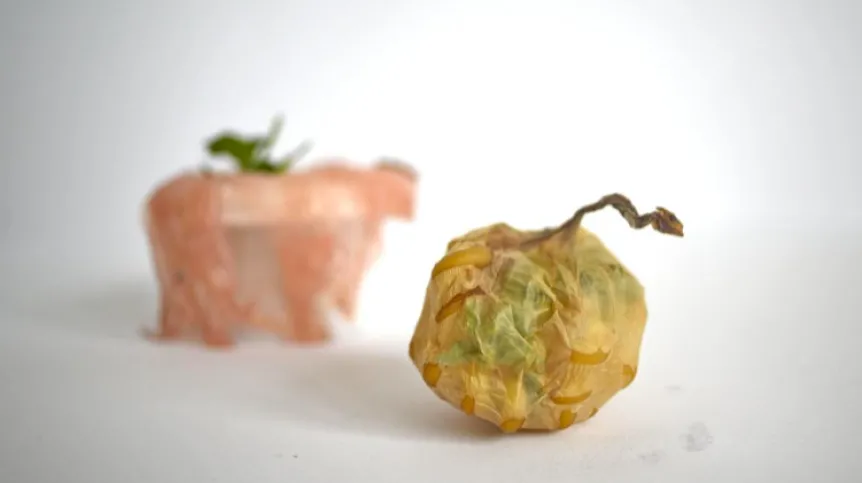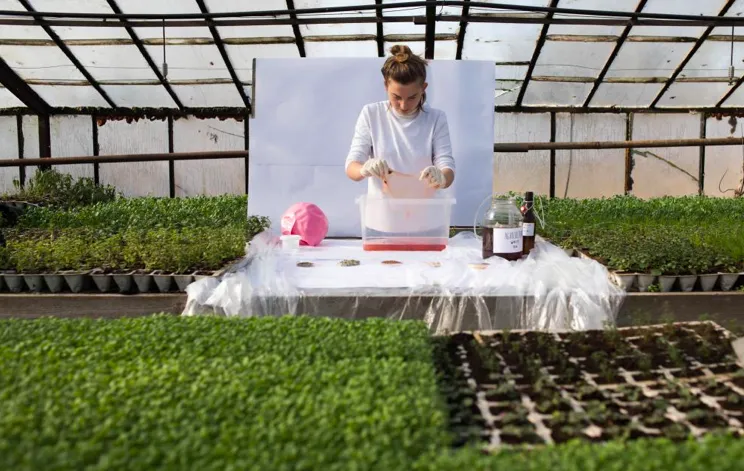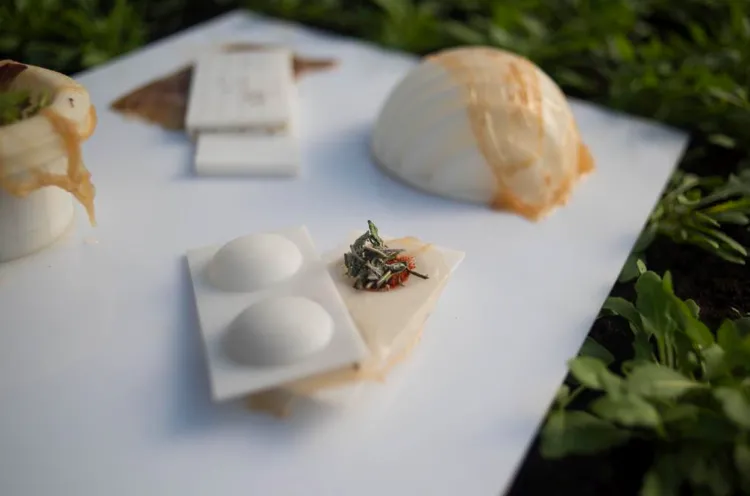
Ecological packaging made of kombucha instead of plastic? Róża Rutkowska from the School of Form at SWPS University proposes a new solution for packing various products. After use, packaging can be safely discarded or eaten - she says.
It resembles a thin coating that can be compared to the outer layer of onion. The author of the idea of environmentally friendly packaging, which can be used for semi-dry and dry products, is Róża Rutkowska - a graduate of the School of Form at SWPS University. After opening the product, the packaging can be eaten or discarded without any remorse, because it will easily decompose in the environment.
The packaging is made from the culture associated with kombucha production, referred to as SCOBY (Symbiotic Cultures of Bacteria and Yeasts). "SCOBY contains cellulosic bacteria and yeasts needed for propagation in a liquid containing sugars. These sugars are fermented. Then, a biofilm forms on the surface and cuts off the oxygen so that the bacteria can multiply in the fluid in anaerobic conditions" - says Róża Rutkowska.
"We place SCOBY in a liquid with sugars and wait a week to two weeks for results. Sterile conditions, advanced skills or sophisticated equipment are not needed. The solution does not need sunlight. The only thing that is needed is about 20-35 degrees Celsius temperature and a minimum of three centimetres depth of the liquid in which the material can grow" - describes Rutkowska.
Many people use currently popular SCOBY for their own needs, for example to make a drink called kombucha. Nothing prevents those people, for example farmers, from producing such packaging material.
According to the author, the material itself still needs to be improved. Its 6 months old prototypes look the same as those that have just been created. Storage temperature is also not a problem. But moisture is, because in high humidity the material can absorb water.
The material grows "flat" on the liquid surface. The dimensions of the sheet are as large as the container in which it grows. Its individual layers can be combined under the influence of water.
PAP - Science in Poland
ekr/ agt/ kap/
tr. RL
Gallery (4 images)
-
 1/4Source: Róża Rutkowska
1/4Source: Róża Rutkowska -
 2/4Source: Róża Rutkowska
2/4Source: Róża Rutkowska -
 3/4Source: Róża Rutkowska
3/4Source: Róża Rutkowska -
 4/4Source: Róża Rutkowska
4/4Source: Róża Rutkowska













